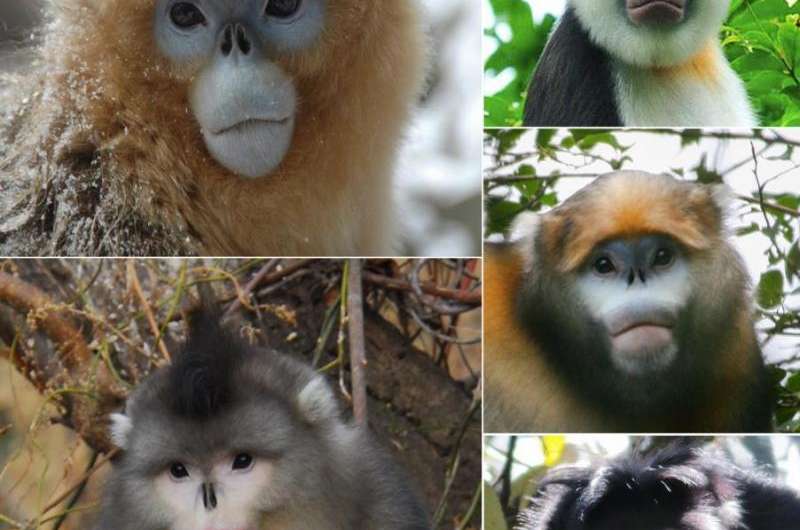Snub-nosed monkeys—conservation challenges in the face of environmental uncertainty

Snub-nosed moneys provide an excellent example of adaptive radiation and display uncommon ecological adaptations. They live along an elevation gradient from near sea level to beyond 4500 m. Habitats differ according to elevation, and monkey's behaviour and ecology vary accordingly. R. avunculus are endemic to northern Vietnam, and found in subtropical forests on steep karst limestone. They are completely arboreal.
R. brelichi generally ranges in a zone of mixed deciduous and evergreen broadleaf forest between 1500 and 2200 m above sea level. This species is primarily arboreal and uses wild variety of food resources. R. roxellana ranges in elevation from 1200 to over 3000 m above sea level, using deciduous broadleaf forest, conifer forest and a forest type that mixes both deciduous broadleaf and conifer trees. R. bieti distribute in evergreen forests between 3000 and 4500 m above sea level, the highest known elevations for non-human primates. R. strykeri was recently found in northern Burma (Myanmar) and has now also been confirmed in Nujiang Prefecture, Yunnan Province, China. The specimens existed in three or four groups ranging in mountainous forests at 1700 to 3200m above sea level in the eastern Himalayas. But still little is known for this species.
The snub-nosed monkey used to live in most of China, in the south, southwest, southeast, central and northwestern regions. The monkeys could adapt to varied climates during the past through migration and vertical movement. Unfortunately, in the last four centuries, most populations of snub-nosed monkey died out and were forced to retreat from plain. Currently, all the five species of snub-nosed monkeys face extinction, with the R. roxellana being listed as vulnerable; the other four species are listed as endangered and critically endangered by the International Union for Conservation of Nature and Natural Resources (IUCN). The dysfunction of fragmented and deforested ecosystems is the greatest threat to the long-term survival of this genus. Nowadays, China, Vietnam and Myanmar's state governments are making efforts for protecting snub-nosed monkeys. Although governments are taking actions in protection the monkeys, it's more important to improve the living standard of local people and heighten public awareness on conservation and sustainable use of natural resources and wildlife.
More information: Peng Zhang et al. Snub-nosed monkeys (Rhinopithecus spp.): conservation challenges in the face of environmental uncertainty, Science Bulletin (2016). DOI: 10.1007/s11434-016-1008-z
Provided by Science China Press





















